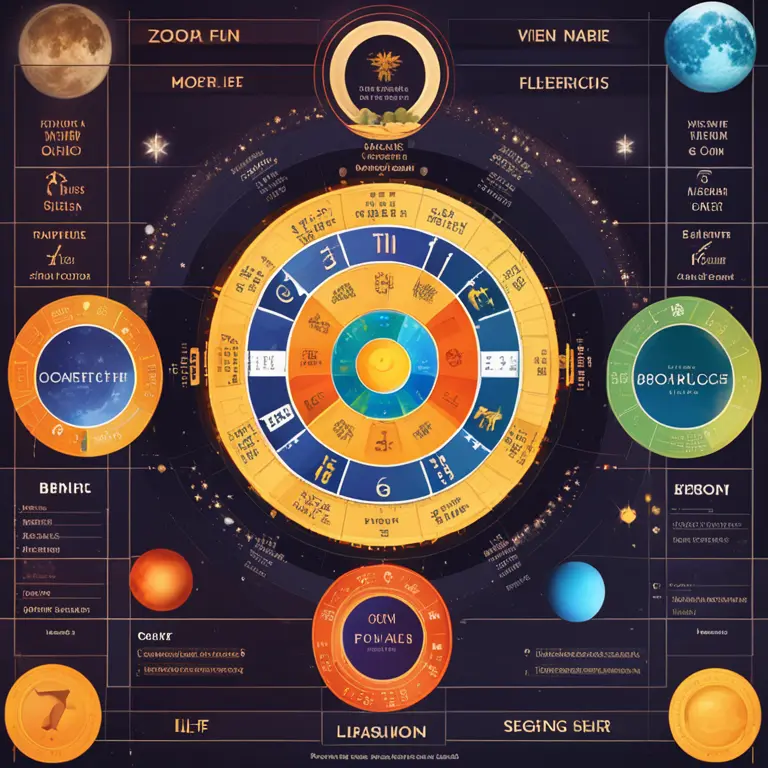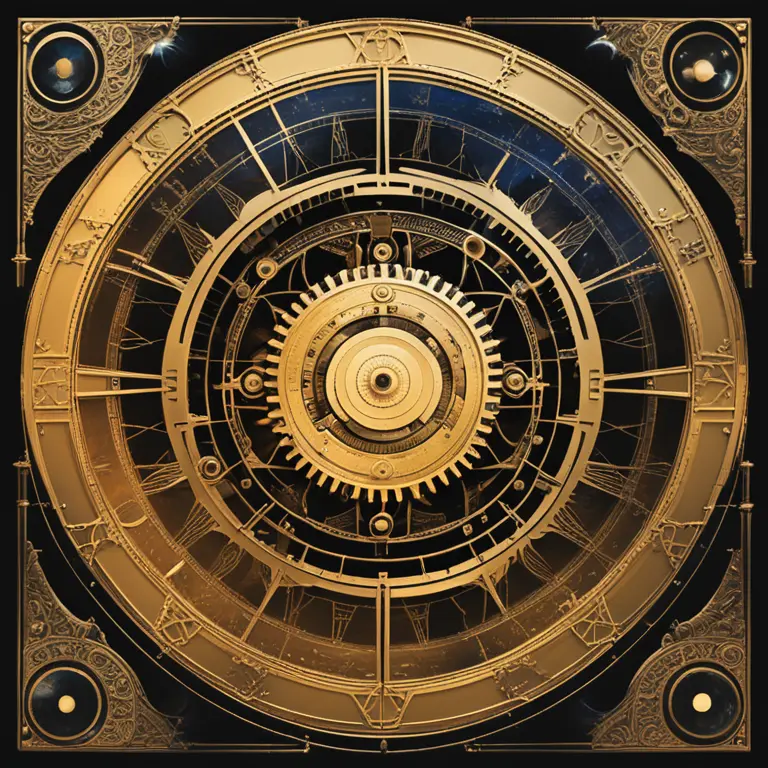
The Art of Birth Chart Astrology: A Personal Cosmic Map
Delve into the intricate world of birth chart astrology to discover the celestial influences that shaped your destiny from the moment you were born.
article by Priya Deshmukh
Birth Charts: Astrology's Blueprint
Astrology, an ancient practice dating back thousands of years, provides a unique lens through which we can view the cosmos' impact on our lives. At its core lies the birth chart, often referred to as the natal chart, which captures the astronomical positions of the planets at the exact moment of one's birth. It is a cosmic snapshot, embodying the celestial DNA that contributes to our individualities and life paths. Modern astrology continues to respect these time-honored principles, integrating contemporary understanding to deepen our connection with the stars.

Elements of a Birth Chart
Understanding a birth chart requires familiarity with its primary components. A chart is divided into twelve houses, with each symbolizing different life aspects, such as relationships, career, and health. These houses host the zodiac signs and planets, which were in specific positions at the time of your birth. The Sun sign illustrates your core essence, the Moon sign reveals emotional inner workings, and the Rising sign or Ascendant portrays your approach to life. The interplay among these elements offers insight into your character and potential life events.

Planetary Influences and Aspects
While the Sun, Moon, and Ascendant are pivotal, the influence of other planets and celestial bodies is also significant. Mercury governs communication, Venus shapes love and values, and Mars dictates drive and energy. The outer planets—Jupiter, Saturn, Uranus, Neptune, and Pluto—impact generational trends and personal transformation involving growth, structure, innovation, spirituality, and rebirth, respectively. Aspects, the angular relationships between planets, create a dynamic energy flow, enabling astrologers to interpret the complexities of one's personality and life experiences.

The Relevance of Transits and Progressions
A natal chart is not only a glimpse into one's inherent traits but also a tool for forecasting. Astrologers examine current and future planetary movements—known as transits—against the birth chart, as these can activate key life developments. Moreover, progressions, which reflect inner growth and evolution, slowly shift the birth chart's dynamics over time, revealing maturation phases and periods of change. In the ever-evolving journey of life, these techniques allow individuals to align with cosmic rhythms for personal growth and decision-making.
Synthesis and Interpretation
A birth chart analysis goes beyond identifying placements; it entails a synthesis of all factors. Astrologers must weave together the tapestry of signs, planets, houses, and aspects to create a cohesive narrative. A skilled astrologer can discern patterns and themes, offering a nuanced interpretation that speaks to one's strengths, challenges, and opportunities for evolution. This synthesis requires not only technical knowledge but intuitive understanding, marrying the science and art of astrology.
Practical Applications and Guidance
In modern times, people turn to astrology for various reasons: self-discovery, relationship dynamics, career choices, and more. Birth charts serve as guiding compasses, empowering individuals to take charge of their destinies and foster self-awareness. By illuminating one's potential and timing for critical life events, astrology can provide practical advice and reassurance amidst uncertainty. It encourages us to embrace our uniqueness and harness the cosmic energies that are our birthright.
Published: 1/22/2024
Modified: 1/23/2024
More predictions
Come back here soon to learn more about yourself and your future


The Essence of Your Birth Chart
Delve into the cosmic blueprint of your personality through the lens of your unique birth chart, guiding your journey through life's astrological influences.


Birth Chart Compatibility: Insights for Relationships
Discover how birth charts reveal the cosmic chemistry between individuals, guiding you towards a harmonious connection.


Birth Chart: The Essence of Your Cosmic Blueprint
Delve into the cosmic blueprint of your personality through the intricate details of your birth chart in modern astrology.